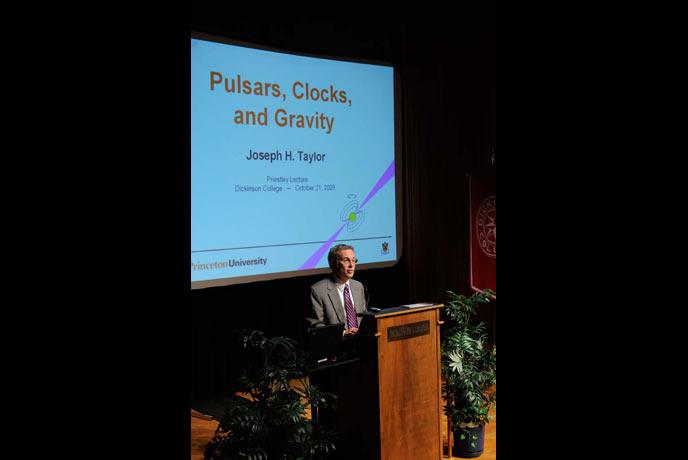Joseph Taylor Wins Priestly Award

Taylor speaks about Joseph Henry, the first director of the Smithsonian Institution, whose work with electromagnets identifies him as one of the most important scientists of the 19th century.
Sometimes, the things that you cannot see have the greatest impact. This was certainly the case for Nobel laureate Joseph Taylor, who was granted the 2008 Joseph Priestley Award for discovering an unseen celestial body that has changed the way we understand gravitational physics.
The background: A finger on the pulse of the pulsar
A pulsar is a rapidly spinning, dense star that emits radio waves in what seem to be regular intervals, or pulses. In 1993, Taylor and fellow scientist Russell Hulse won a Nobel Prize for discovering a new kind of pulsar—one that is accompanied by an invisible object that can be detected because of its gravitational pull on the pulsing star. Their discovery of this binary pulsar system has been extremely valuable to scientists, who have used Taylor and Hulse's binary pulsar to test Einstein's theory of general relativity.
Taylor spoke about his groundbreaking research during a ceremony in his honor, held in the Anita Tuvin Schlechter (ATS) Auditorium, and sponsored by The Clarke Forum for Contemporary Issues, the mathematics department and the computer science department. He is the 57th scientist to receive the Joseph Priestley Award.
Named for Joseph Priestley, a Pennsylvania scientist and scholar who discovered oxygen, the annual award ceremony honors distinguished scientists whose research contributes to the welfare of humankind.
By MaryAlice Bitts
Photos by A. Pierce Bounds '71
Published October 21, 2008